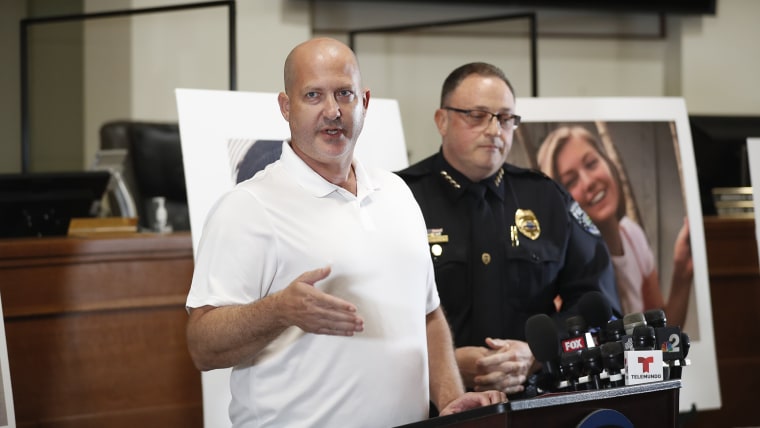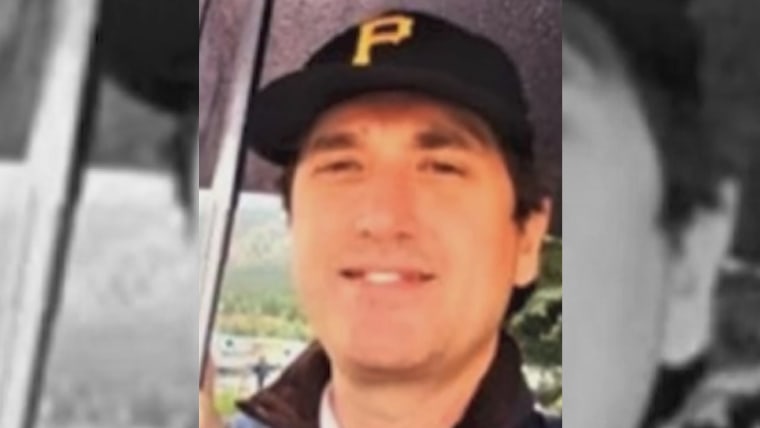The disappearance of Gabby Petito riveted the nation and dominated the news cycle for the better part of a month. For many, the story of a beautiful young woman who vanished at the beginning of her adult life strikes a chord. Gabby could have been a sister or a friend, a daughter or a neighbor.
Denise’s parents, now in their 70s, have known for years that a happy ending was unlikely — but they have held out hope for some closure.
But for some families, including mine, Gabby’s is a story that strikes more than a chord — it strikes a nerve. For families of young women who have gone missing in the prime of their lives, Gabby’s story isn’t a cautionary tale of what could happen; it’s a painful reminder of what already has.
In the cases of those families whose missing loved ones didn’t dominate national headlines for weeks, who are still searching for daughters and sisters and cousins years, even decades, after their disappearances — notably families of Indigenous women and other women of color who didn’t get on the national media radar — Gabby’s story raises painful questions about why the cases of some missing young women receive so much attention and are at least, in part, resolved, while others remain open cases, and open wounds. We need to pay attention to them just as much.
My cousin, Denise Pflum, was a white 18-year-old high school senior when she vanished. It was 1986. I was a little girl at the time.
She’d gone to a party the night before with friends at a home in the countryside of southeastern Indiana and left her purse behind. The next morning, she set out to retrieve it. She wore a red Motley Crue T-shirt, pinstriped jeans and her class ring. She was never seen or heard from again. Her car, a 1981 cream-colored Buick Regal, was later found on a rural farm lane, abandoned.
Denise was an honors student and varsity athlete. She vanished a month before her prom, two months before her graduation, five months before she was to begin studies at Miami University and embark on her dream of becoming a scientist.
In vanishing, she became an unfortunate statistic.
In 2020, slightly more than 543,000 people went missing in the United States, according to records compiled by the National Crime Information Center. About half were female, and of those, about a third were African American. Approximately 8 to 11 percent of all missing persons cases are unresolved each year, which means thousands of women vanish — and remain missing.
A select few missing females capture national media attention for prolonged periods, bringing ongoing — and arguably critical — attention to their cases. Gabby Petito is one. Natalee Holloway, Chandra Levy and Elizabeth Smart are three more.
Many more women don’t become household names. Yet behind every one of their cases that have gone cold is a story of heartache, and a series of endless questions about what could or should have been done differently in the days and weeks and months following the disappearances. Those are the sorts of agonizing questions that my cousin’s parents know all too well.
From the beginning, there were factors that hindered the investigation into my cousin’s disappearance. Because Denise was 18 at the time, a legal adult, some law enforcement officers initially suggested that she had simply run away for a few days and encouraged her parents to give her time to return.
It’s a roadblock that other families of missing women have said slowed the start of searches, hampering the seriousness with which cases are taken by some authorities. Every hour counts in a missing persons case, and any time lost waiting for someone to return home on their own can make potentially critical differences.
The local authorities initially assigned to search for Denise did not appear to be seasoned veterans when it came to missing persons cases. Small towns can be wonderful places to live, but officers there often haven’t handled complicated and time-sensitive investigations into possible abductions. Denise’s parents lament that, well intentioned though many of the early investigators may have been, they were green when it came to preserving the potential crime scene at the abandoned car and looking for critical clues, including footprints, fingerprints and tire marks in and around the area.
Being from a small town may have also hurt the search in other ways. Denise’s small farming community is more than an hour’s drive from Indianapolis, Dayton and Cincinnati, where the closest TV stations and the region’s largest newspapers were. Early and persistent coverage from sizable media outlets might have made a difference in the seriousness and speed with which authorities responded to the case, and in the number of tips collected.
Still, for years there were glimmers of hope. As recently as last summer, authorities briefly thought they’d arrested the person responsible for Denise’s disappearance. But they later said the man in question had made a false confession — possibly in a bid to get reward money — and didn’t provide enough concrete details before his death to prove his connection to the crime. In the end, no remains were recovered and there’s been no concrete evidence to establish with certainty whether she’s alive or dead.
Denise’s parents, now in their 70s, have known for years that a happy ending was unlikely — but they have held out hope for some closure, for some pieces of credible information that might help them know what happened to their firstborn before they die.
Every milestone — birthdays, holidays — are painful reminders of what’s gone, what might have been. Every well-intentioned question from strangers asking how many children they have can be a dagger to the heart.
For years while they waited for answers, and kept Denise’s bedroom untouched. Her parents wanted everything waiting for her just as it had been. Today, they have moved all of her things into storage bins in the garage — still keeping them close, just in case. For decades, they maintained the same landline phone number in the hope she would one day call.
They opted to stay in the same community to be close to family and longtime friends. But that contributed to a feeling of uneasiness and, at times, mistrust. Did the people around them — neighbors, colleagues — know something they don’t? Could the person at least partly responsible for their daughter’s disappearance be in their midst, passing them in the aisles of the grocery store?
Their grief and pain is widely shared. For me, Denise’s case forever shattered my belief that small towns are the safest places on earth. Never again would I think my small Midwestern hometown or the beautiful farm country my father grew up in and where Denise vanished were entirely peaceful and safe. Denise’s disappearance showed me that darkness and shadows can lurk anywhere — even in what seem the most neighborly and bucolic corners.
As a society, we need to do better in searching for all young women who disappear at the prime of their lives.
Gabby Petito’s remains were found last month, and she was laid to rest a week ago. Though unspeakably sad, her burial provided an element of closure. As her parents now continue their search for justice, it’s important to remember the heartbreak of all families in search of missing loved ones, of the open wounds that last years, even decades, and that may never heal. And the stories that don’t get national attention.
A report by Wyoming, the state in which Petito’s remains were recovered, found just 30 percent of Indigenous missing and murdered people in the area made the news, compared to 51 percent of white people. And a study by Northwestern University found missing Black females are significantly underrepresented in media coverage.
As a society, we need to do better in searching for all young women who disappear at the prime of their lives — and reflect upon, and mourn, the gaping holes, nagging questions and irreparable trauma to the families and communities that are left behind.
Source: | This article originally belongs to Nbcnews.com











